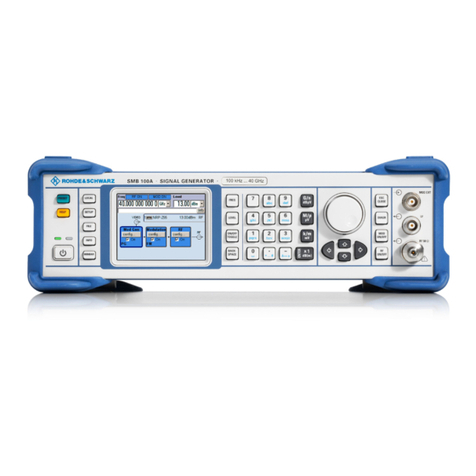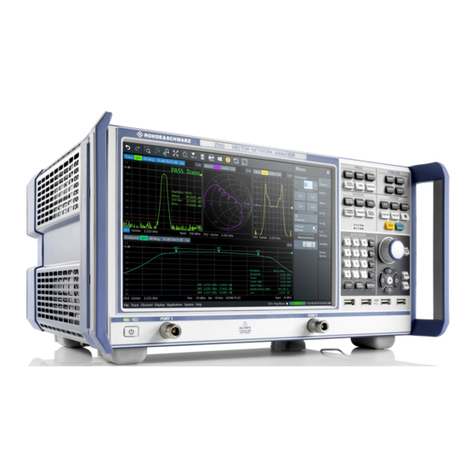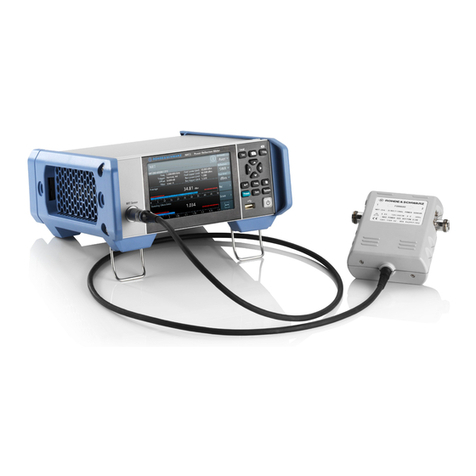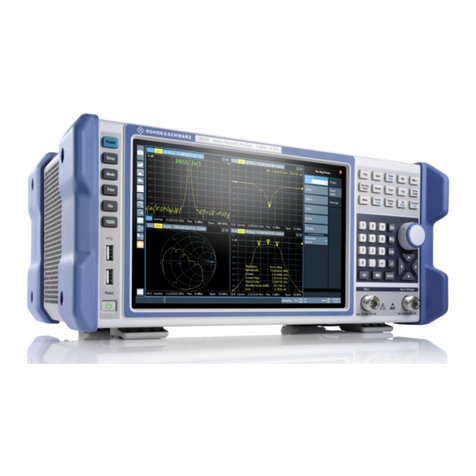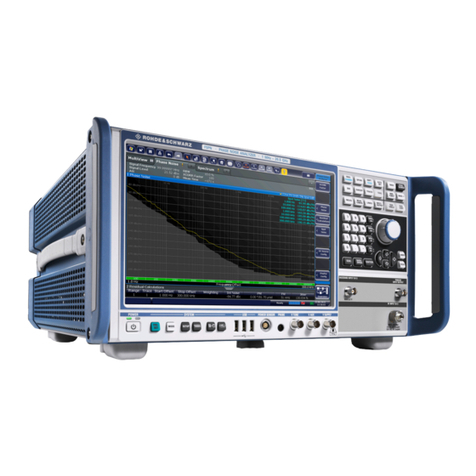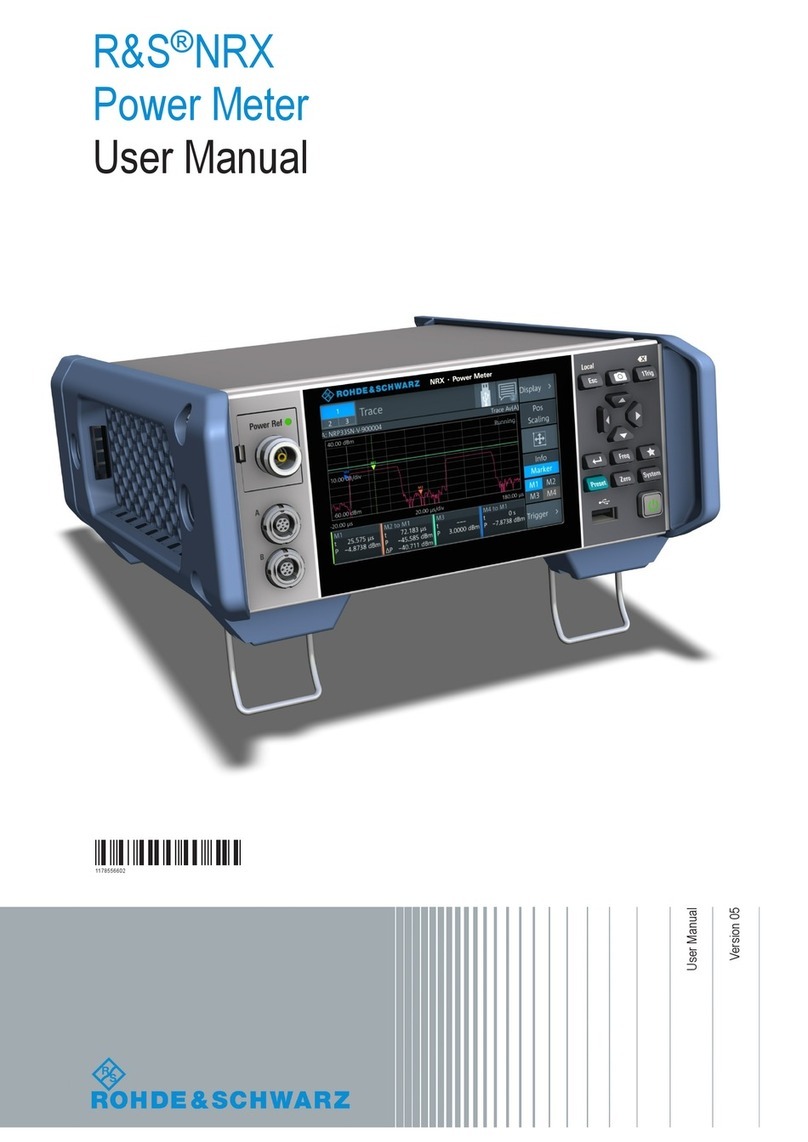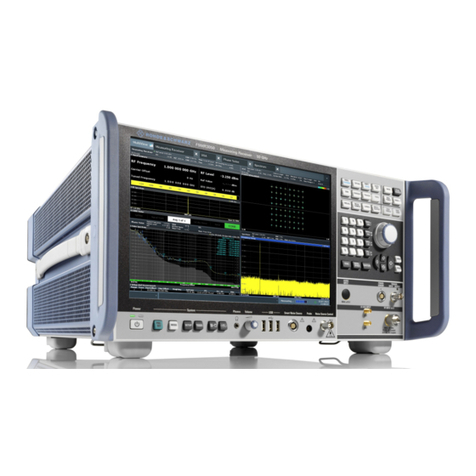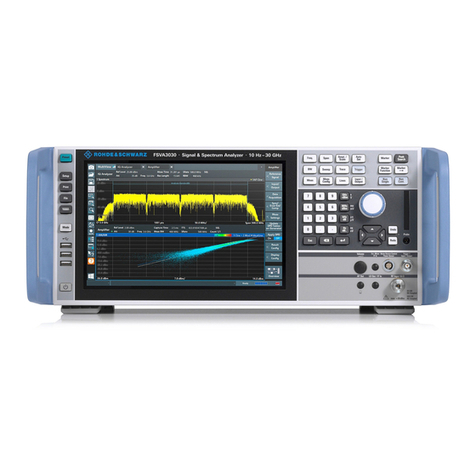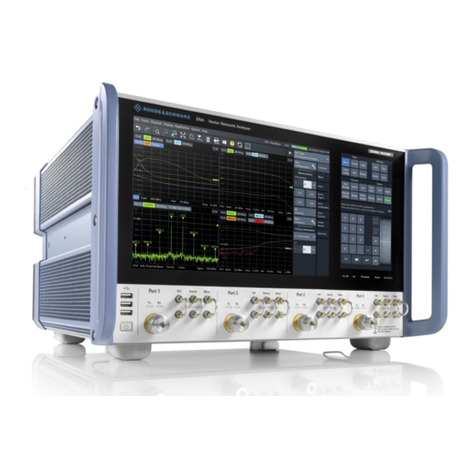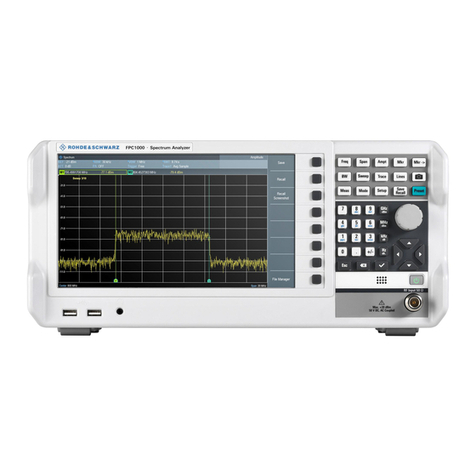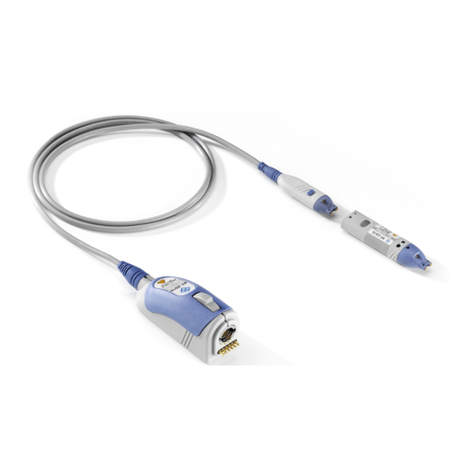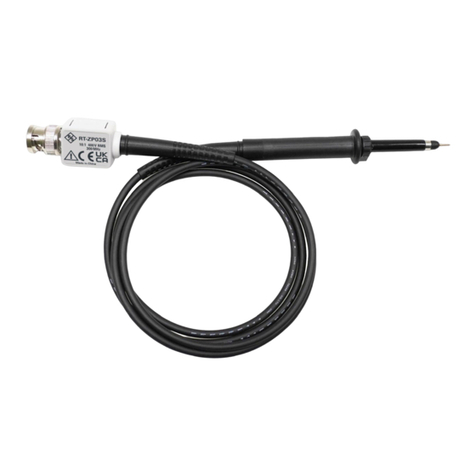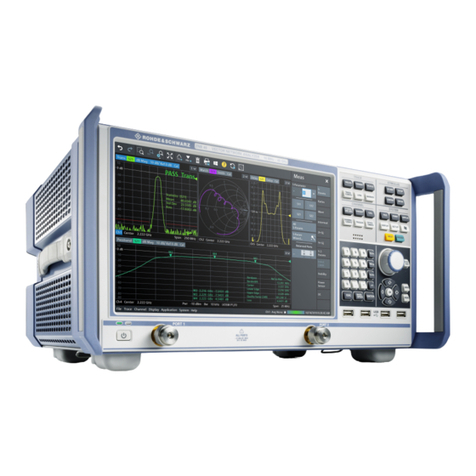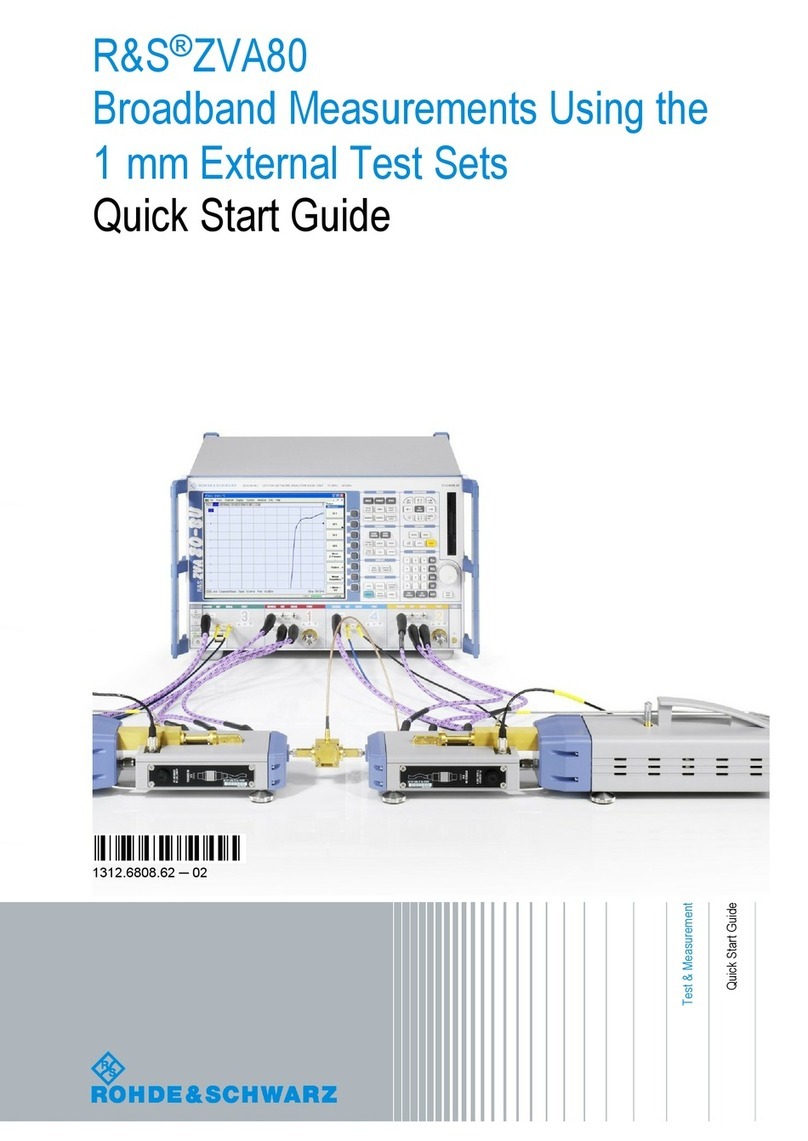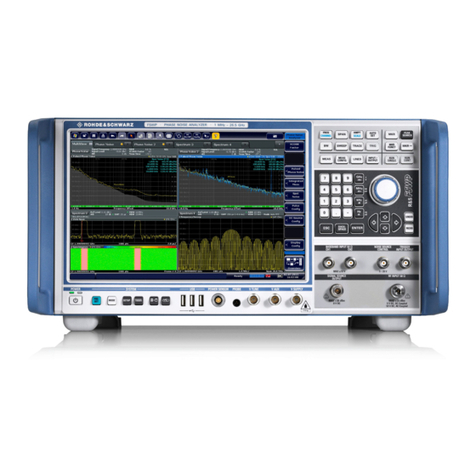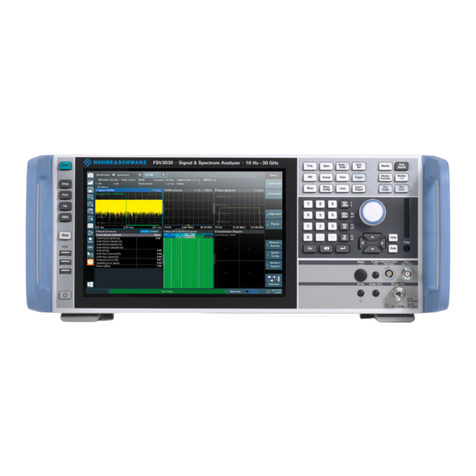
Safety and regulatory information
R&S®RT-ZC20B
6User Manual 1802.9967.02 ─ 01
Using the product requires specialists or specially trained personnel. These users
also need sound knowledge of at least one of the languages in which the user
interfaces and the product documentation are available.
Reconfigure or adjust the product only as described in the product documentation
or the data sheet. Any other modifications can affect safety and are not permitted.
Never open the casing of the product. Only service personnel authorized by
Rohde & Schwarz are allowed to repair the product. If any part of the product is
damaged or broken, stop using the product. Contact Rohde & Schwarz customer
service at https://www.rohde-schwarz.com/support.
In these safety instructions, the term "product" covers instruments (oscillo-
scopes), probes and their accessories.
Choosing the operating site
Only use the product indoors. The product casing is not waterproof. Water that
enters can electrically connect the casing with live parts, which can lead to elec-
tric shock, serious personal injury or death if you touch the casing. If
Rohde & Schwarz provides accessories designed for outdoor use of your product,
e.g. a protective cover, you can use the product outdoors.
Unless otherwise specified in the data sheet, you can operate the product up to
an altitude of 2000 m above sea level.
The product is suitable for pollution degree 2 environments where nonconductive
contamination can occur. For more information on environmental conditions such
as ambient temperature and humidity, see the data sheet.
Performing measurements
Take the following measures for your safety:
●Observe all voltage and current ratings of the instrument, the probes, and the
accessories. Exceeding the allowed limits can lead to an electric shock.
Limits and ratings are marked on the products and listed in the data sheets.
Consider that the rated values depend on the frequency. The limitation curves
or values are provided in the data sheet.
●Never cause any short circuits when measuring sources with high output cur-
rents.
●When working with current probes, observe the additional operating condi-
tions specified in these safety instructions.
Safety instructions













